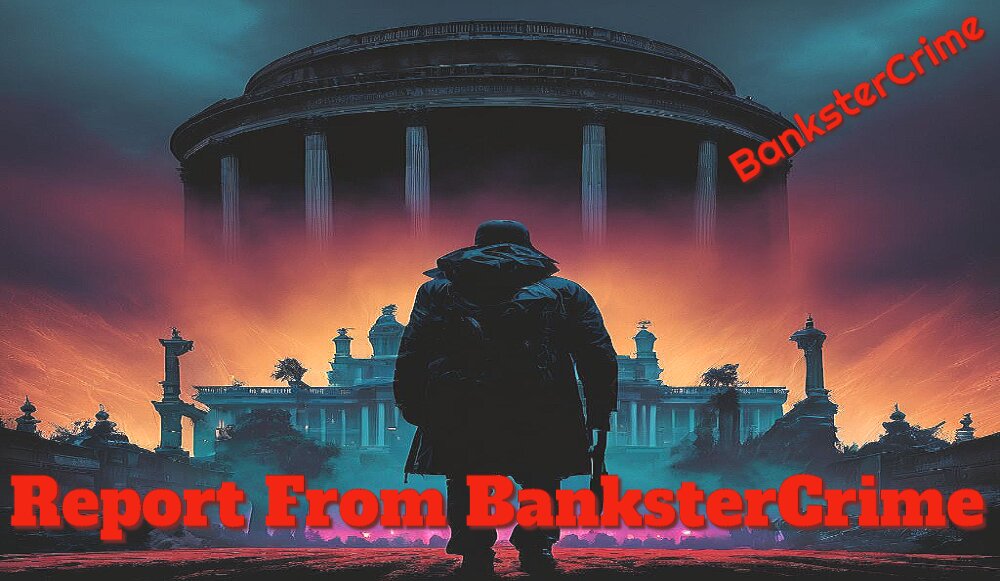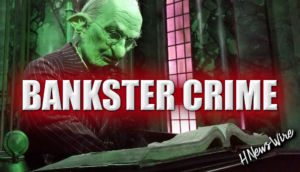
By Pam Martens and Russ Martens:
On June 11, 2015, the Office of Financial Research (OFR) released a sobering report on how banks were reducing their requirements to hold adequate capital against potential losses by engaging in non-transparent “capital relief trades” with potentially questionable counterparties. The OFR researchers summarized the problem as follows:
“Capital relief transactions may have benefits to banks. But, even if real risk transfer is involved, these transactions can pose financial stability concerns by increasing interconnectedness, transforming credit risk into counterparty risk, and obscuring capital adequacy to investors and counterparties. And while bank supervisors have extensive data about banks, they may have less information about the nonbanks who are selling credit risk to those banks and ultimately bearing the risk of loss.”
The Office of Financial Research was created under the Dodd-Frank financial reform legislation of 2010 to make sure that Wall Street mega banks could never again ravage the economy and financial system of the United States — as they did in 2008 – by engaging in reckless derivative trades and toxic bets. OFR describes its mission as follows:
“Our job is to shine a light in the dark corners of the financial system to see where risks are going, assess how much of a threat they might pose, and provide policymakers with financial analysis, information, and evaluation of policy tools to mitigate them.”
Buried in the June 2015 OFR report was a bombshell. When JPMorgan Chase was initiating hundreds of billions of dollars in risky derivative trades in London in 2012, using deposits from its federally-insured bank in the U.S., it was attempting to engage in tricked-up capital relief trades. The insanity of this gamesmanship resulted in $6.2 billion in losses at the bank; an investigation by the FBI; embarrassing Senate hearings; a scathing 300-page report by the U.S. Senate’s Permanent Subcommittee on Investigations; charges of engaging in “unsafe and unsound” banking practices by the Office of the Comptroller of the Currency; and the payment of $920 million in fines to its regulators.
Credit derivatives are frequently used in capital relief trades. In an effort to curb the trillions of dollars in credit derivatives that the Wall Street mega banks are using for non-transparent purposes with non-transparent counterparties, on July 27 of last year the FDIC, the Office of the Comptroller of the Currency (OCC), and the Federal Reserve released a proposal to require higher capital levels at banks with $100 billion or more in assets; (only 37 banks would be impacted). Community banks will not be impacted at all by the new proposals according to the federal regulators.
On September 12, 2023, the banking cartel made its anger and intention to push back known in a 7-page letter. The cartel demanded that the three federal agencies turn over all “evidence and analyses the agencies relied on” in making the proposal.
One of the signatories to the letter was the Bank Policy Institute (BPI), whose Board of Directors consists of the CEOs of the biggest banks. BPI is Chaired by none other than Jamie Dimon, Chairman and CEO of the notorious London Whale bank, JPMorgan Chase.
BPI next launched an ad campaign that grossly distorted what the increase in capital would do, claiming that it would harm working families. (The mega banks that will be most impacted are the same mega banks that blew up the U.S. economy in 2008; put millions of Americans out of work; left millions of working families in foreclosure; got a secret $29 trillion bailout from the Federal Reserve; and then used big chunks of that bailout money to lavish million-dollar bonuses on bank executives.)
Sixteen days after the big bank cartel had posted its September 12, 2023 letter attacking the newly proposed increase in capital rules, the Federal Reserve issued a suspiciously timed announcement of how banks could game the newly-proposed capital rules, with the Fed’s blessing, through the use of a specific style of capital relief trade. The Fed wrote as follows:
“In some synthetic securitizations, a Board-regulated institution transfers the risk of a reference portfolio of on-balance sheet exposures to a special purpose vehicle using a guarantee or credit derivative. The special purpose vehicle issues credit-linked notes to investors, and the Board-regulated institution takes the cash proceeds of the notes as collateral supporting the special purpose vehicle’s performance on the guarantee or credit derivative.
“Under the Board’s capital rule, a Board-regulated institution can recognize the credit risk mitigation of the collateral on the reference portfolio under the rules for synthetic securitizations provided that the requirements in section 41 or 141, as applicable (12 CFR 217.41, .141), are met and that the transactions satisfy the definition of ‘synthetic securitization’ (12 CFR 217.2, ‘synthetic securitization’).”
All you need to know about the above two paragraphs is that the words “synthetic” and “special purpose vehicle” and “credit derivatives” played a central role in crashing Wall Street and the U.S. economy in 2008. The Federal Reserve has apparently learned nothing from the worst financial crash since the Great Depression.
For the most hair-raising part of this story, let us back up to September 29, 2022 – almost exactly one year before the Fed gave its blessing to capital relief trades using credit derivatives. On that date the OFR issued a report that concluded: “When Choosing Counterparties, Banks Tend to Pick Riskier Ones.”
The report was authored by Dasol Kim, a Research Principal at OFR, and Andrew Ellul, a Visiting Fellow at OFR and Professor of Finance at Indiana University’s Kelley School of Business. In a blog post, they summarized their findings as follows:
“In a recent working paper analyzing who banks chose as counterparties in the over-the-counter (OTC) derivatives market, the authors found that banks are more likely to choose riskier nonbank counterparties that are already heavily connected and exposed to other banks, which leads to an even more densely connected network. Furthermore, banks do not hedge these exposures, but rather increase them by selling rather than purchasing credit derivative swaps against these counterparties. Finally, the authors found that common counterparty exposures are correlated with systemic risk measures despite greater regulatory oversight following the 2008 financial crisis.” (Italic emphasis added.)
The only common-sense way to think of this is that Wall Street has once again created a circular firing squad with the U.S. banking system and U.S. economy as collateral damage.
For an idea of what can happen when a mega bank sells credit default swaps, consider how Howie Hubler, a star bond trader at Morgan Stanley, lost $9 billion. Hubler was one of those who made early derivative bets that the lowest-rated subprime bonds would fail during the 2007-2008 financial crisis using credit default swaps. He bought protection by purchasing credit default swaps on subprime debt. But because Hubler had to pay out premiums on these credit default swaps until the price collapse arrived, he sold $16 billion in credit default swaps on higher-rated debt, obviously to collect the premiums to offset what he was paying out while he waited. When the $16 billion turned out to be toxic as well, Morgan Stanley lost at least $9 billion.
According to a government audit of the Fed’s secret loans to the Wall Street mega banks and their trading subsidiaries from December 2007 through early July 2010, Morgan Stanley was the second largest recipient (after Citigroup) of the Fed’s secret bailout loans. Morgan Stanley received a total of $2.04 trillion in cumulative loans from the Fed; Citigroup received $2.5 trillion in cumulative loans from the Fed.
Federal regulators were caught napping in the lead up to the 2008 financial collapse. They are clearly still napping. According to the most recent trading and derivatives report from the Office of the Comptroller of the Currency for the third quarter of 2023, just four commercial banks (JPMorgan Chase, Citigroup’s Citibank, Goldman Sachs Bank USA and Bank of America) hold 94 percent of all credit derivatives held at 4,600 commercial banks. If you want the quintessential definition of concentrated risk, this is it.

Give the gift of great skin care. Our Soap and Shave Bars are gentle and produce a smooth creamy lather that is nourishing to your skin. They are handmade in small batches. We use only high-quality natural ingredients that you can pronounce. No chemicals, no sodium laurel sulfate, no phthalates, no parabens, no detergents. The set can include Soap Bar, Shave Bar, Shave Brush, and/or Shampoo Bar. These come in a white box and are perfect for your gift giving needs.
Our soaps are made with skin loving ingredients including olive oil, coconut oil, lard, sweet almond oil, shea butter, and castor oil. We do not use palm oil. Scented only lightly with fragrance oils.
The Shave bars give a very close and smooth shave with no razor burn. They leave your skin feeling amazing. A lather can be built up in your hands and then applied to your face, but it is best to use a shaving brush. These bars will only produce a thick foam when used with a shaving brush.
Our Shampoo Bars have a thick lather. A lather can be built up in your hands and then applied to your hair, but it is best to rub the bar gently in your hair. Rinse and repeat.
You choose a scent:
A Thousand Dreams is a whimsical blue scented in a warm mix of fruity and floral notes with peach, peony, lily, musk, sandalwood, and amber.
Bay Rum Spice is a nice masculine scent similar to Old Spice. The scent notes are clove, pine needles, cedarwood, orange, vanilla, and musk.
Birch Woods is a great outdoors-type scent. The notes are bergamot, patchouli, vetiver, and tonka bean.
Cool Clear Water is a refreshing scent. The notes are crisp water, oakmoss, pine, cedar, and musk.
Lavender Champagne has a wonderful scent of Lavender and Champagne and has a light purple color. The scent notes are lavender, sparkling Champagne, grapefruit, orange, thyme, oak, and amber.
Midnight Waters is a moody-mystical scent that opens with fruity notes of red berries, juicy tangerine, and bergamot. Then unfolds into bubbly Champagne, violet flowers, cashmere, amber, and musk.
Raspberry Vanilla is an all-time favorite fragrance for soap. It is a beautiful magenta color. The scent notes are raspberry, strawberry, lemon, coconut, peach, honeysuckle, plum, and vanilla.
Warm Sandalwood is a warm, rich, and woodsy scent. The colors are warm and rich with brown, gold, and white.
A Soap bar will weigh approximately 4 ounces and be approximately 2.25 inches wide by 3.5 inches tall and 1 inch thick. A Shave bar will weigh approximately 3 ounces and be approximately 2.5 inches across and 1.25 inches thick. A Shampoo Bar will weigh approximately 3.5 ounces and be approximately 2.5 inches across and 1.25 inches thick. Please keep in mind that our products are handmade and hand cut. Each bar is unique and might vary slightly in shape, size, design, and color from those pictured.
Please keep your Soap Bars, Shave Bars, and Shampoo Bars well-drained and allow to dry between uses. This will ensure longer lasting bars. www.graniteridgesoapworks.store
![]()

